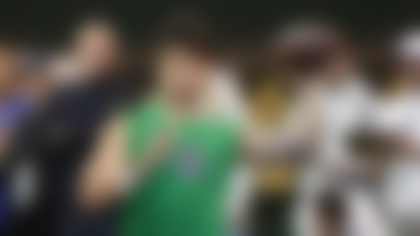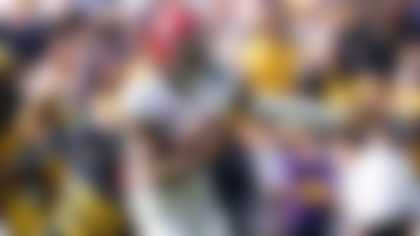One of the more subtle points of intrigue at the NFL Annual Meeting this week in Palm Beach, Fla., is the proposal by the Buffalo Bills to put all replay reviews up in the booth. This is currently how it's done in the final two minutes of each half. In short, the replay official would have the final decision on whether to overturn/uphold replay reviews instead of the referee, similar to how the college football replay system works.
I have been advocating something like this for the past 10 years. Replay is an indispensable part of football today, and the technology exists to make it efficient and unobtrusive to the game. It wasn't always that way. In 1999, under the guidance of competition committee members Rich McKay and Mike Holmgren, the league instituted a replay system with a new set of guidelines and technologies. Both McKay and Holmgren told the coaches to just let it get passed, and it would be fine-tuned as time passed. That was fine, except little was done to change or update it as the NFL progressed.
As instant replay evolved, the NFL began to expand on the things that could be reviewed, thus slowing down the system and adding layer upon layer of minutia in determining a call. I sat in many league meetings with the competition committee, looking at film and slowing down play after play on almost a frame-by-frame basis to determine a call. Half the room would see it one way, the other half would not. Nothing was solved.
The NFL officials are the best in the world (I can't believe I am saying this, but it is true), but we don't treat them that way in the current system. We go through a laborious dog and pony show of throwing a red flag and stopping play while the official goes over to a peep show-type booth and then explains to millions of fans whether he was right or wrong.
By moving the reviews to the booth, the referee has an additional resource to get it right. When a questionable catch on the sideline is made, the referee will consult with the line judge and the field judge to ask, "What did you see?" A ruling is made -- quick and efficient with good team work. We have the technology today to add a voice to the conversation with the perspective of multiple camera angles. The booth official could simply communicate to the referee, in real time, what he saw, and the call can be made. No red flag, no peep show and limited errors.
In tennis, they can review a line call within seconds, down to the fraction of an inch, with the Hawk-Eye system. This type of approach would speed up the game, maintain the correction of egregious mistakes and remove the pressure from the head coach to throw the red flag on what is many times a pure guess. We do it in the final two minutes of the game, which is the most important part, so why not do it during the rest of the game? It is not a cost factor because this is all possible with the existing technology we have in place, and it is only going to get better.
To not recognize this puts the league in the category of "100 years of tradition, unhampered by progress."
Follow Brian Billick on Twitter @coachbillick




